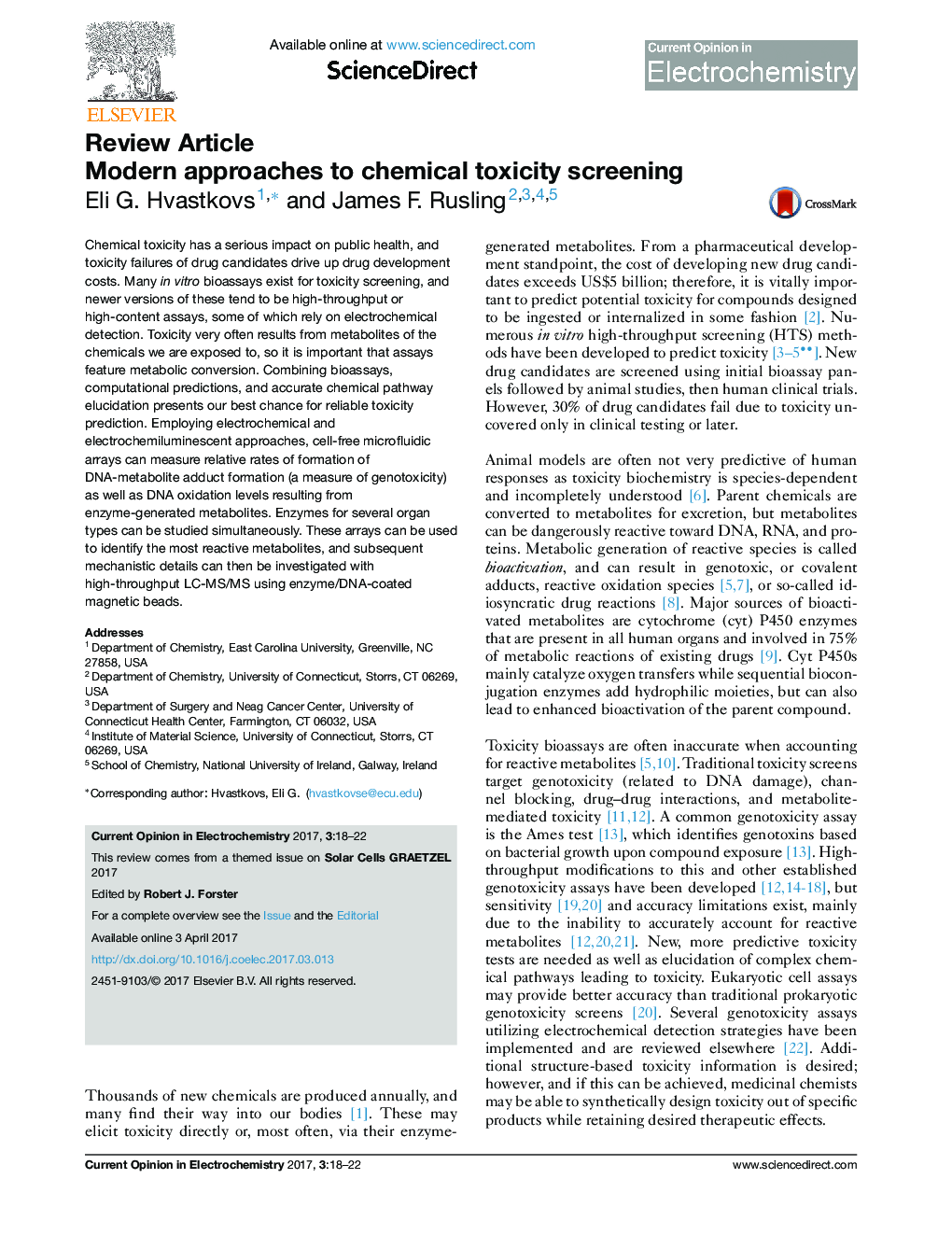| Article ID | Journal | Published Year | Pages | File Type |
|---|---|---|---|---|
| 8917680 | Current Opinion in Electrochemistry | 2017 | 5 Pages |
Abstract
Chemical toxicity has a serious impact on public health, and toxicity failures of drug candidates drive up drug development costs. Many in vitro bioassays exist for toxicity screening, and newer versions of these tend to be high-throughput or high-content assays, some of which rely on electrochemical detection. Toxicity very often results from metabolites of the chemicals we are exposed to, so it is important that assays feature metabolic conversion. Combining bioassays, computational predictions, and accurate chemical pathway elucidation presents our best chance for reliable toxicity prediction. Employing electrochemical and electrochemiluminescent approaches, cell-free microfluidic arrays can measure relative rates of formation of DNA-metabolite adduct formation (a measure of genotoxicity) as well as DNA oxidation levels resulting from enzyme-generated metabolites. Enzymes for several organ types can be studied simultaneously. These arrays can be used to identify the most reactive metabolites, and subsequent mechanistic details can then be investigated with high-throughput LC-MS/MS using enzyme/DNA-coated magnetic beads.
Related Topics
Physical Sciences and Engineering
Chemistry
Electrochemistry
Authors
Eli G. Hvastkovs, James F. Rusling,
